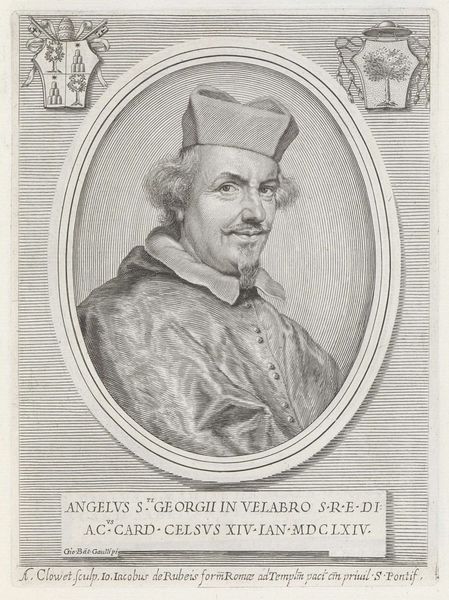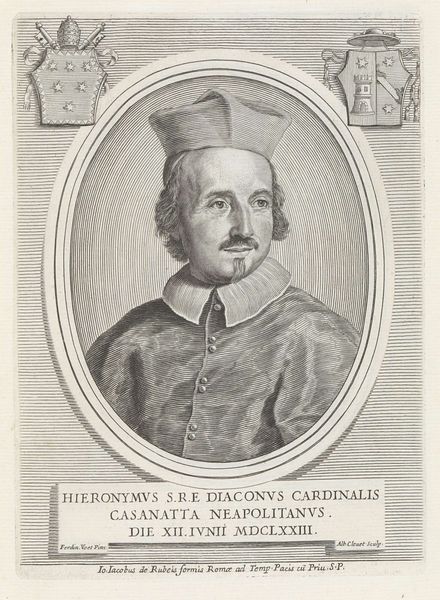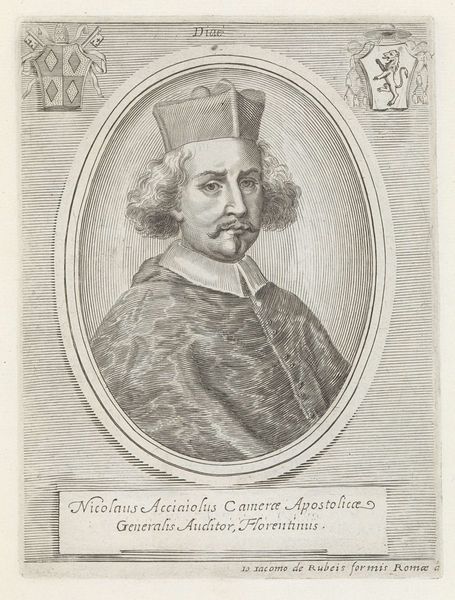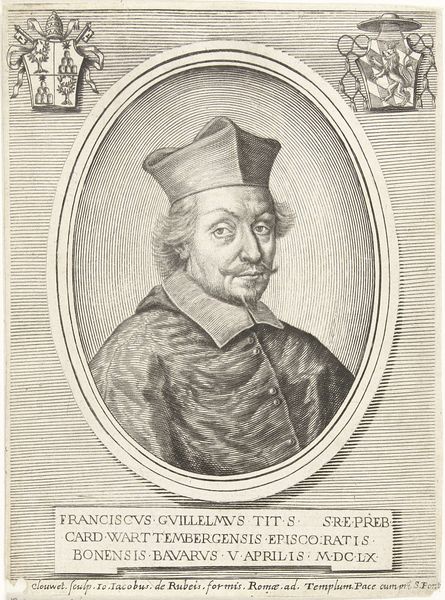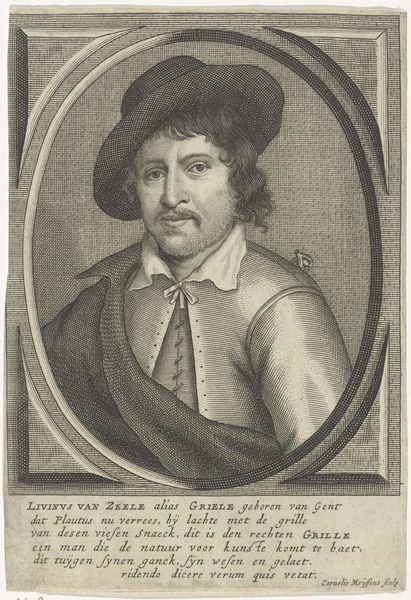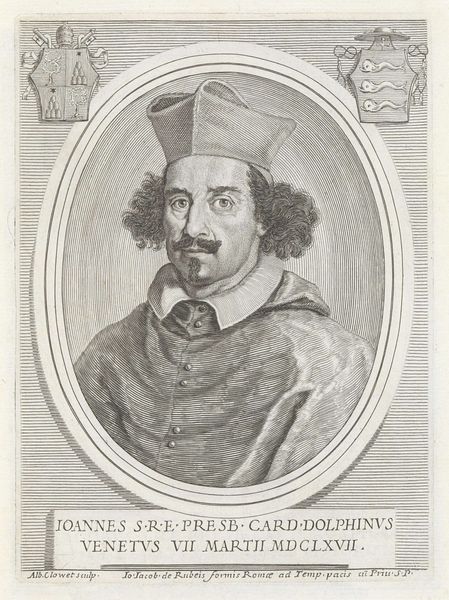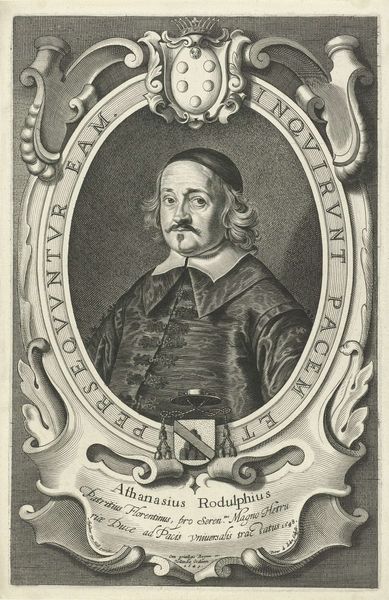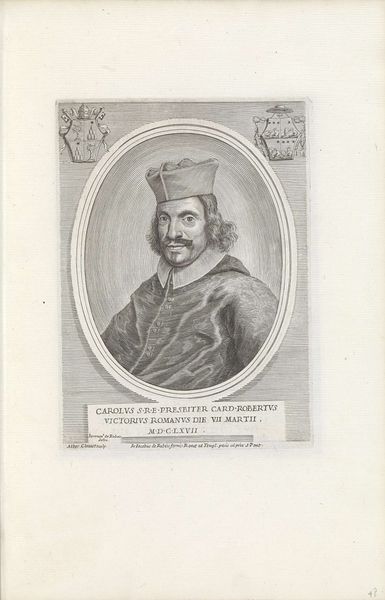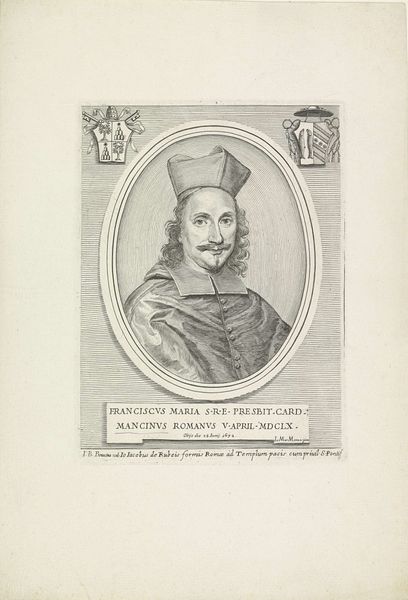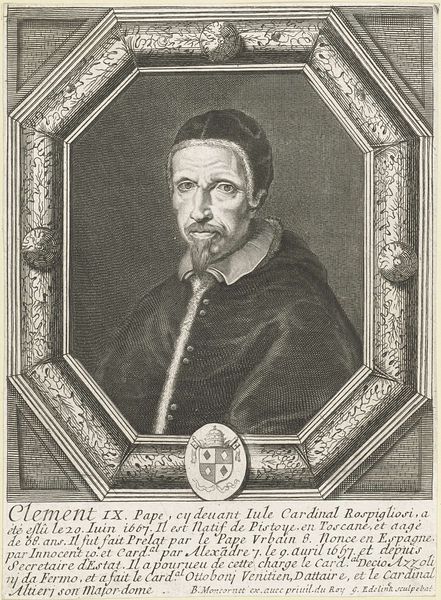
engraving
#
portrait
#
baroque
#
old engraving style
#
line
#
history-painting
#
academic-art
#
engraving
Dimensions: height 198 mm, width 147 mm
Copyright: Rijks Museum: Open Domain
Curator: Looking at this portrait, the fine lines almost vibrate, giving it an intense sense of presence. Editor: This is "Portret van kardinaal Vitaliano Visconti" by Albertus Clouwet. It's an engraving dating back to between 1667 and 1679. Notice the stark contrast and the meticulously crafted details. Curator: It's amazing what the artist could achieve through engraving. How were prints like this produced and circulated? Was it just an elite market for these? Editor: Prints like these had a complex position. On the one hand, this portrays an important clergyman, reinforcing social and religious power structures; on the other, the reproducibility of engravings democratized imagery, making it accessible to a wider public. They played a vital role in spreading information and shaping public opinion. Curator: Thinking about the engraving process, imagine the labor, the precise control over the burin, the layering of lines to achieve that depth and tone... it speaks volumes about the value placed on skilled craftsmanship and the artistic conventions of the time. The paper, the ink, the printing press itself all contributed to the final artwork we see here, but we lose sight of the production easily. Editor: The depiction of Cardinal Visconti, framed by those elaborate coats of arms, speaks to the power of the Church and the aristocracy. Considering the time, these images could also act as propaganda tools during religious and political conflicts. The baroque style is prevalent too. Curator: Definitely, but even the seemingly straightforward pose, the attire, they're carefully constructed elements serving very precise functions, communicating status, piety and authority through material markers. The quality of materials communicates something in itself to its initial audience. Editor: Absolutely. It reveals a lot about how individuals and institutions wished to be seen. In short, it's a complex interplay between artistic skill, socio-political context, and the circulation of images in society. Curator: Now I'm wondering about the studio the artist worked in; it all makes me appreciate how the means of production shapes how the message of wealth and status plays out visually. Editor: Agreed, considering all we've talked about makes one see a portrait of Cardinal Visconti not just as an image, but as a convergence of forces—political, religious, and economic, materialized through ink and paper.
Comments
No comments
Be the first to comment and join the conversation on the ultimate creative platform.
